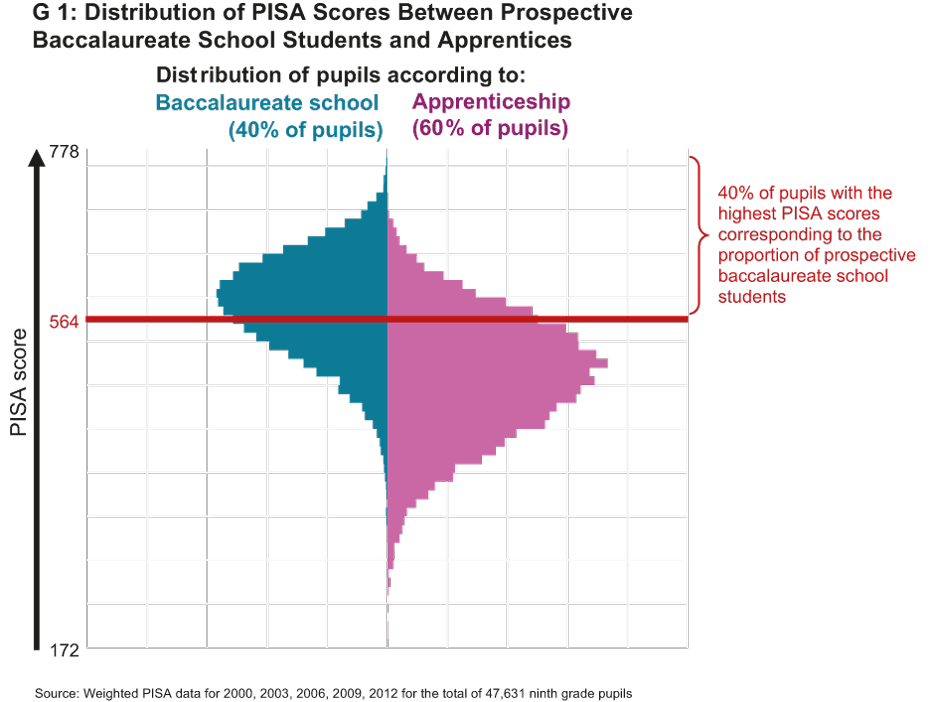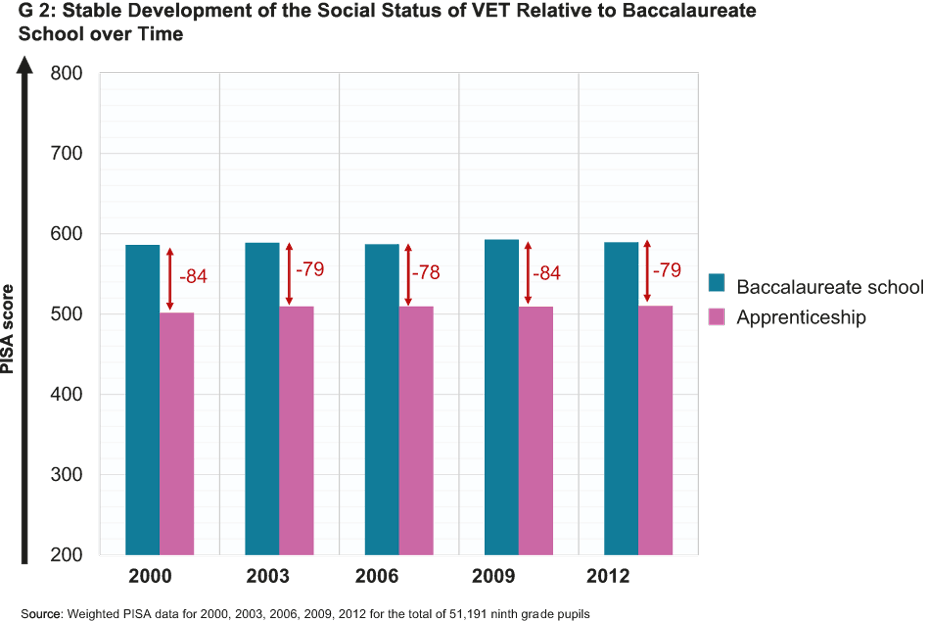Social Status of Vocational Education and Training Has Not Declined
- KOF Bulletin
- Vocational Education and Training
- Education
The public debate frequently conveys the impression that the social status of vocational education and training (VET) has declined. Can this impression be substantiated by empirical evidence? In a new study based on PISA data, KOF researchers show that the relative cognitive skills of prospective VET students and grammar school students have remained constant over time. This suggests that the social status of vocational education and training has not declined.
Measurements based on PISA skills
Thomas Bolli, Ladina Rageth and Ursula Renold base their analysis of students’ cognitive skills on the data of the international PISA school performance studies of 2000, 2003, 2006, 2009 and 2012 (see external page http://www.oecd.org/pisa/). They utilise the data of around 50,000 students attending ninth-grade who have not yet reached the end of mandatory schooling. Aside from average test results in the areas of reading comprehension and mathematics, the authors used statements made by the adolescents regarding their plans once they have completed their mandatory schooling.
PISA skills pyramid
Similar to a population pyramid, graph G 1 shows the distribution of students’ skills using the PISA skills on the vertical axis. The skills range from the lowest number of points (172) up to the highest number (778). The horizontal axis represents the break-down of students into prospective VET and grammar school students. The blue area displays the distribution of the various PISA skills among prospective grammar school students, while the pink area shows the distribution of PISA skills among future VET students. The red horizontal line represents the percentage of prospective grammar school students of 40% at 564 PISA points.
Read from the top, graph G 1 shows that students with top PISA skills decide to attend grammar schools. However, the top students who decide in favour of VET also have very high PISA skills. This means that students with very high cognitive skills also choose to attend VET courses. Graph G 1 also demonstrates that the two distributions intersect to a large extent. Consequently, many prospective VET students have PISA skills above the red line. This would not be the case if the students with the highest cognitive skills uniformly decided to attend grammar schools.

In/decrease in skills differential between 2000 and 2012
As a next step, the researchers analysed the change in the relative skills of prospective grammar school and VET students between 2000 and 2012 (see Graph G 2). To simplify the interpretation of the data, the graph presents the mean of the average skills of the prospective grammar school students (blue) and VET students (pink) for each year. The red arrows show the differential in skills, which fluctuates between 78 and 84 PISA points. This confirms that, on average, prospective grammar school students have higher cognitive skills than prospective VET students, but also shows that the differential is surprisingly small. Graph G 2 furthermore suggests that the skills differential did not change between the 2000 and 2012.

Skills differential as measurement of social status of VET
The result suggests that the social status of VET has not declined as is often claimed in the public debate. The authors’ measurement of the social status of VET can also be used for other comparative analysis. In KOF Study No. 110, Bolli, Rageth and Renold analyse the social status of VET according to gender, town / country and language region as well as educational background and parents’ origin. On top of this, KOF Working Paper No. 403 examines the change in social status of VET when adolescents born outside Switzerland remain in the country for an extended period.
KOF Wirtschaftsforum: 12th of June 2018
Conference Topic: Social Status of Vocational Education and Training in Switzerland
Contact:
No database information available